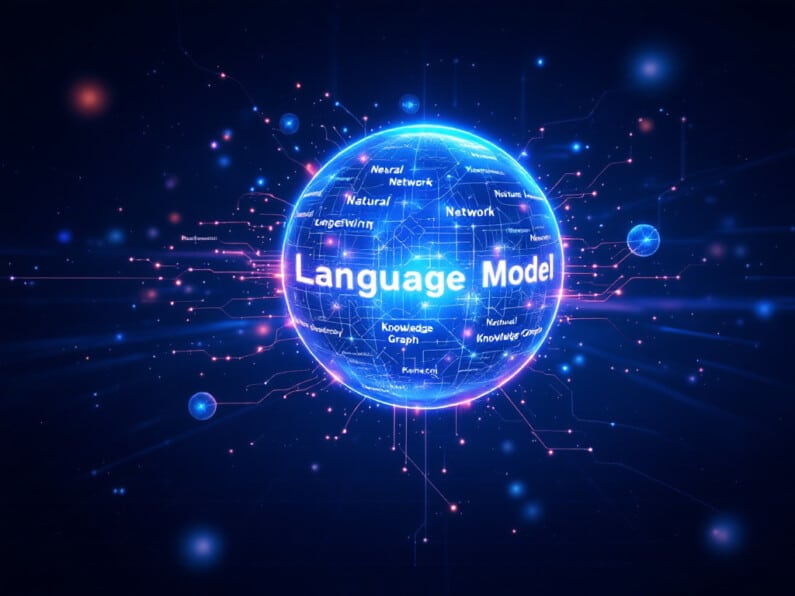A language model is a artificial intelligence model designed to understand, generate or manipulate human language.
More specifically, it is a computer programme that has been trained on vast quantities of textual data to learn the structures, patterns and statistical relationships between words, phrases and concepts.

This enables him to :
- predict the rest of a sentence by estimating the probability of occurrence of each subsequent word.
- generate text in a coherent and fluid way.
- carry out various natural language processing (NLP)These include machine translation, text summarisation and question answering.
👉 Types of language models
- Classical statistical models (e.g. n-grams): based on word sequence probabilities.
- Neural models (e.g. RNN, LSTM): use neural networks to capture complex dependencies.
- Transformer-based models (e.g. GPT, BERT, Llama): rely on attention mechanisms to deal with long contexts and long-distance relationships.
📝 Language model applications
Language models have a wide range of applications, including :
- Machine translation : translate text from one language to another.
- Answers to questions : answer questions in natural language.
- Text summary : condense long documents into shorter summaries.
- Chatbots and virtual assistants : fuel conversations with users.
- Creative content generation : write poems, scripts, blog posts, etc.
- Spelling and grammar correction : identify and correct errors in a text.
- Sentiment analysis : determine the emotional tone of a text.
- Search for information : improve the relevance of search results.
- Text completion and word suggestions : help with the wording by suggesting the following word.
- Text classification : categorise documents into different categories (e.g. spam or non-spam)
 How it works
How it works
1. Training on massive data
- Language models are trained on huge text datasets, often called corpus. These corpora can include books, newspaper articles, websites, conversations, source code and much more.
- The aim of this training is to enable the model to learn the patterns (diagrams) and language structures. They learn grammar, vocabulary, syntax and even semantic and contextual nuances.
- The larger and more diverse the training corpus, the better the model will perform and the more it will be able to generalise to new texts.
2. Operation based on probabilities
- At the heart of a language model is the notion of probability. The model calculates the probability that a certain word or sequence of words will appear in a given context.
- For example, if you type "The sky is...", a language model will calculate the probability of the words that could logically follow "The sky is...". It might determine that "blue", "clear", "cloudy", "starry" are highly probable words, while "banana" or "car" are extremely unlikely.
- It uses the statistics learned during training to make these probability predictions.
3. Text generation and language comprehension
- Text generation : thanks to its ability to predict subsequent words, a language model can generate text. Starting with an initial phrase or word, it can go on to predict the next word, then the next, and so on, creating a potentially long and coherent text. In this way, language models can write articles, poems, answer questions and so on.
- Language comprehension (limited) : Although they are said to 'understand' language, it is important to note that their 'understanding' is different from human understanding. They do not understand the deeper meaning or intention behind words in the same way as a human. Their understanding is based on statistical patterns and the relationships between the words they have learned. However, this statistical 'understanding' is powerful enough for many applications.


